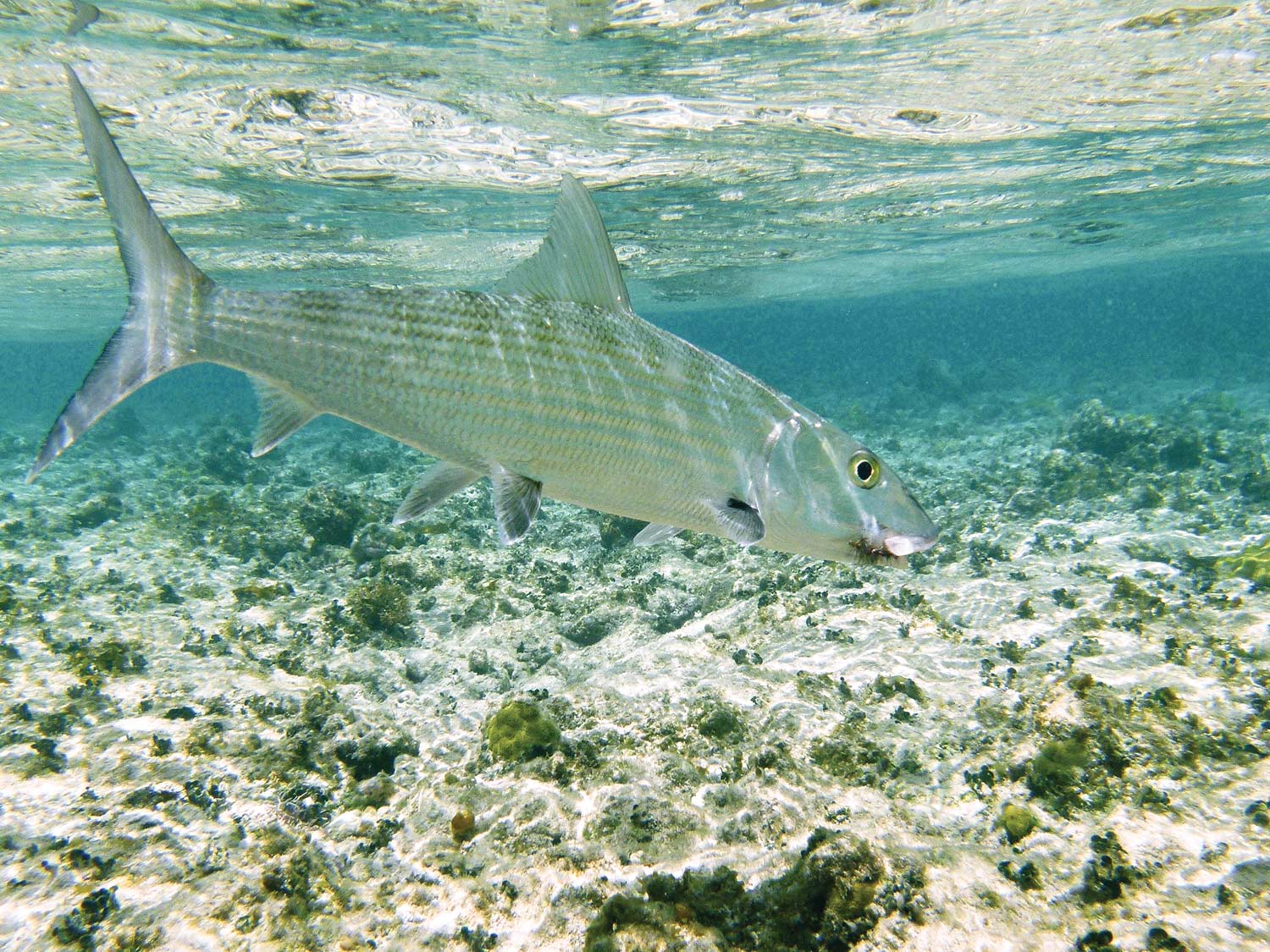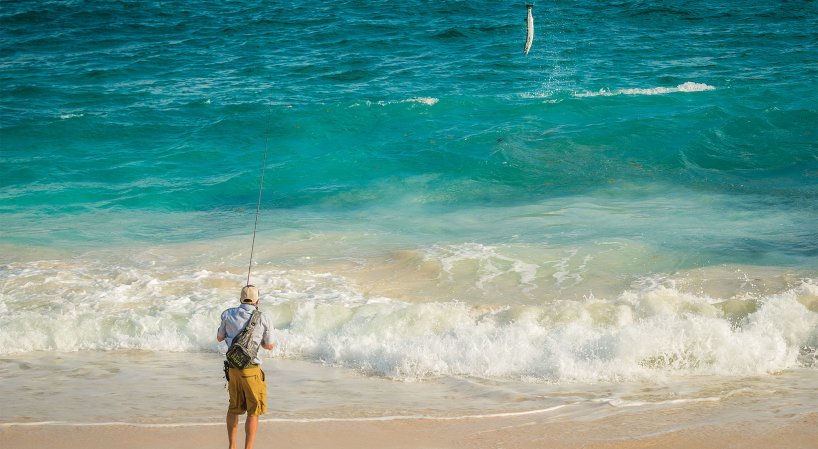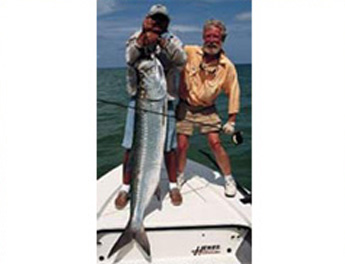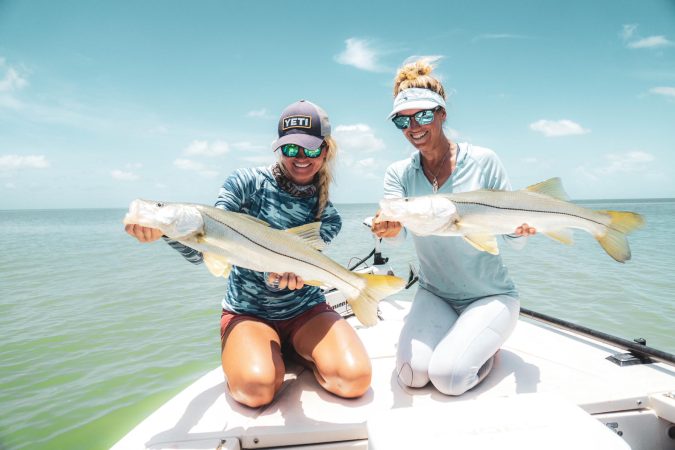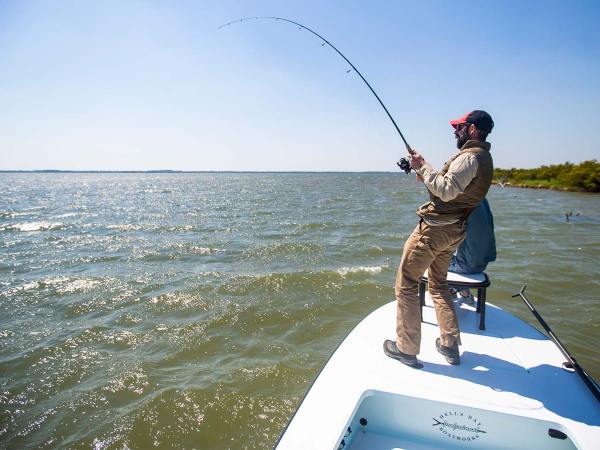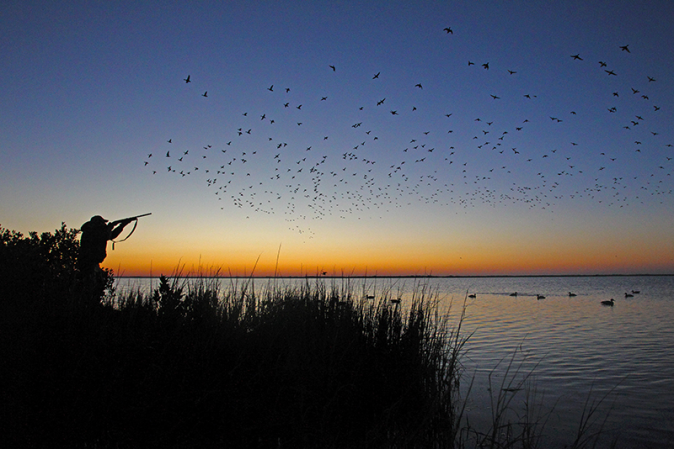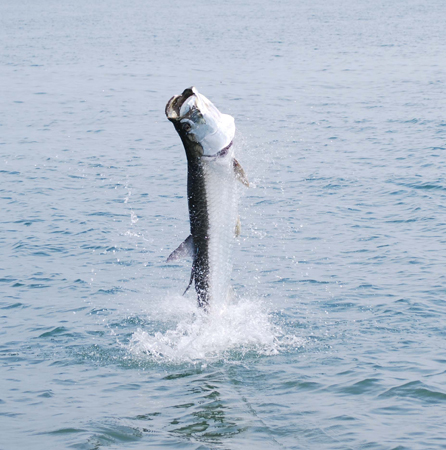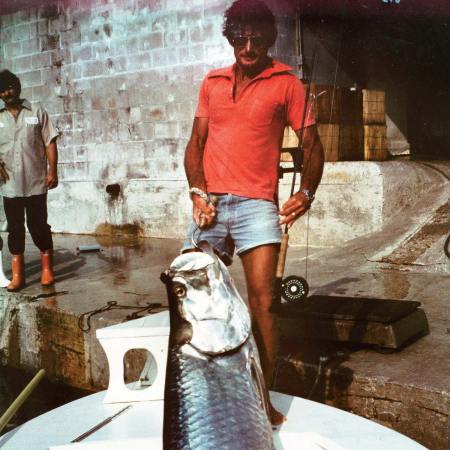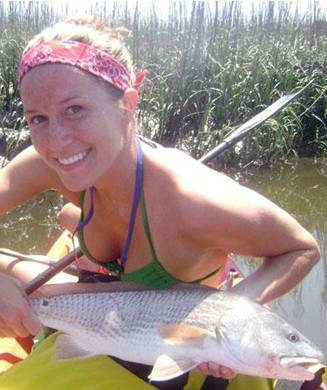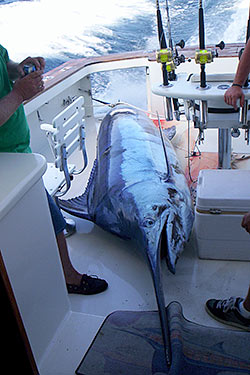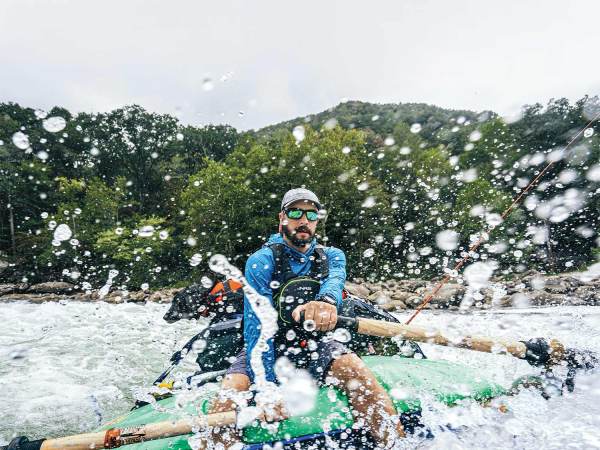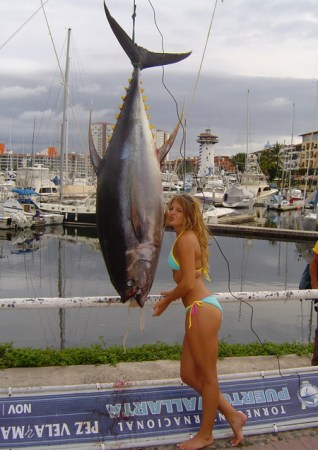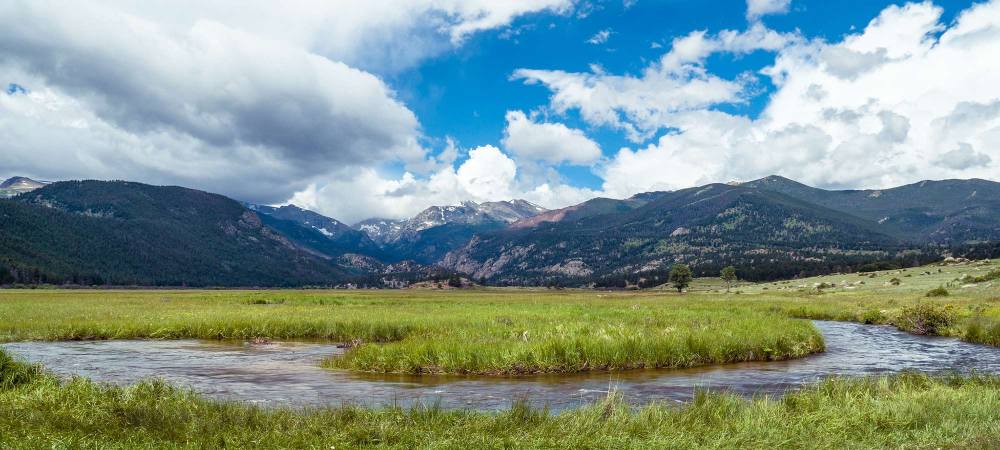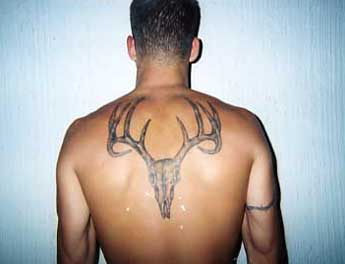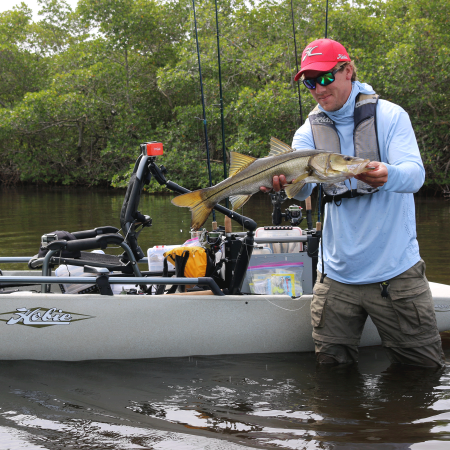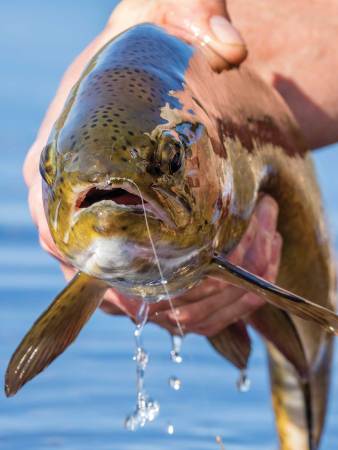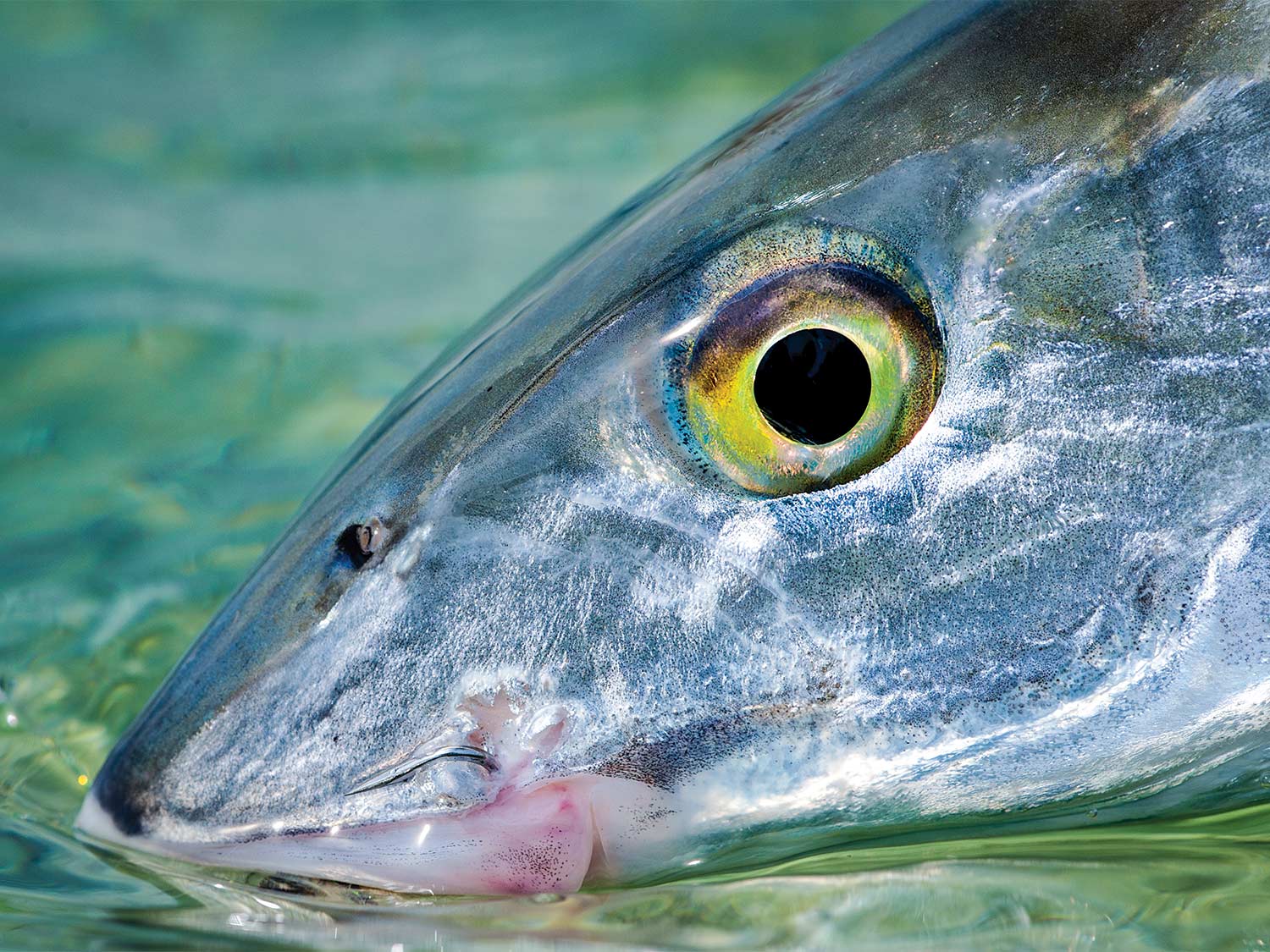
I was staring at the water in front of a long stretch of mangroves, trying not to breathe through my nose. A large raft of rotting grass extending several hundred yards offshore floated near our boat and had stained the water brown, turning the normally crystal-clear Caribbean into murky tea while giving off a stench that was pure sewer. This wasn’t the picturesque Belize that draws scuba divers from around the globe.
A frigate bird circled overhead, easy to identify by its forked tail and broad wings. Like me, it was scanning the shallow water along the edge of the matted grass for fish. But whereas it was in search of a beak full of baitfish, I had something bigger in mind.
“Over there, mon. Forty yards. One o’clock.”
Perched behind and above me on the platform that straddled the skiff’s outboard, guide Alton Jeffords was leaning into the push pole, trying to move us to where he’d just seen a tarpon roll. In his island accent, “forty” came out as “fohr-tee.”
I checked the coils of line at my feet to make sure all was clear and started to cast. After three full days of fishing, I could tell my form was going to hell from the heavy 11-weight. If any of my former striper fishing buddies had seen me, I know they would have been merciless, taunting me that my years in Montana chasing “sissy bug-eating fish” with 5-weights had made me soft. Given the stabs of pain in my shoulder and elbow, I’d probably agree.
I launched the bushy red and black EP streamer into the wind, double-hauling for all I was worth, and then aggressively stripped it back in—a rhythm I had now repeated countless times under the intense Belizean sun.
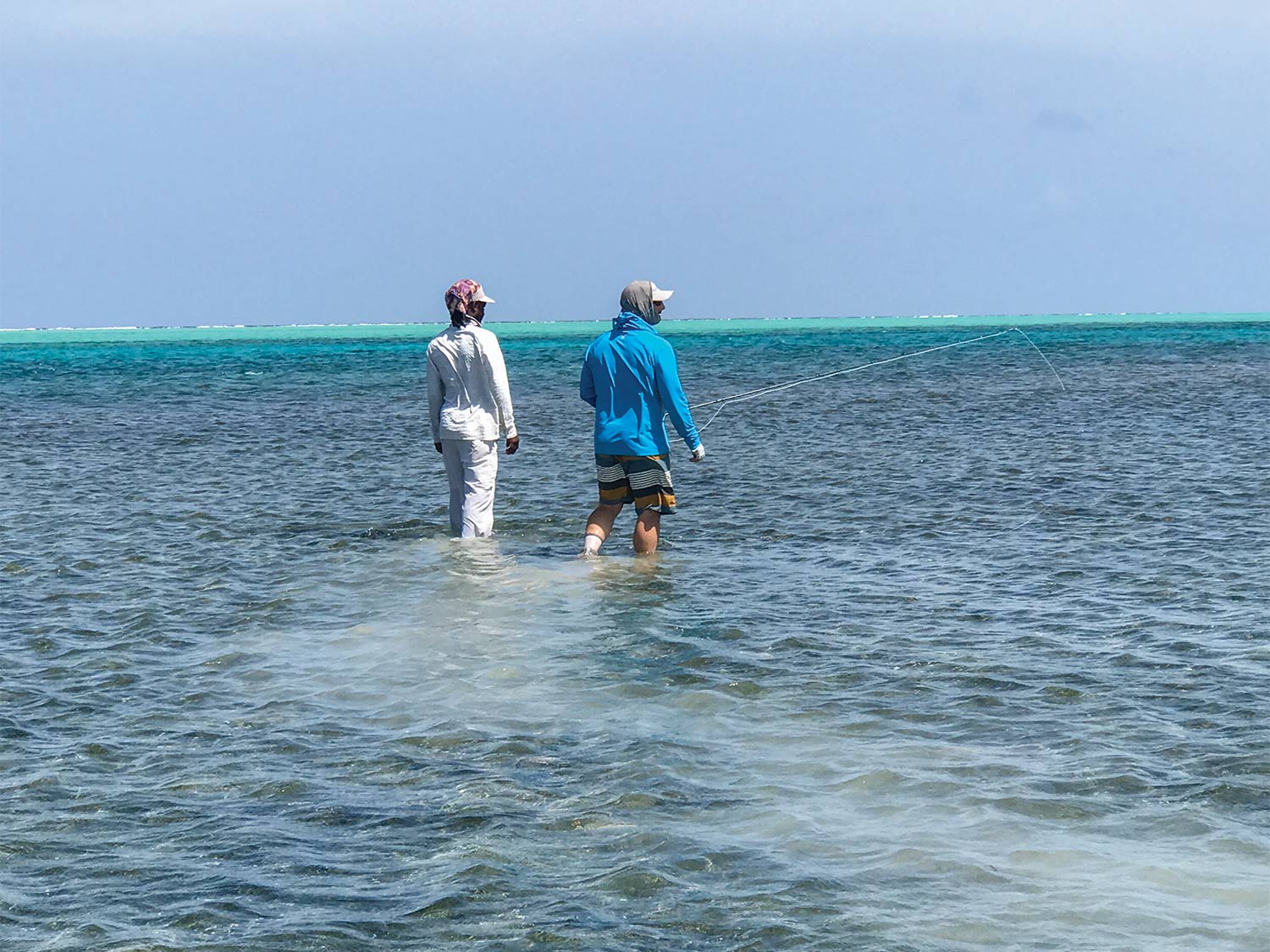
After this cast, however, the fly line jerked hard against my hand, sending an electric shock through my body faster than my mind could even form the idea: tarpon.
I swept my rod low and to the side and hauled against the line, but before I could drive the point of the hook home into the bony plates of the tarpon’s jaw, the line went slack. That unmistakable tug was the closest I’d come to hooking one yet.
The encounter left me rattled, and if it weren’t for the silver-sided fish rolling in the brown water around us, some of which were better than 100 pounds, I would have popped the top on a bottle of Belikin beer to regroup.
Most of the line I had stripped in had spilled over the side of boat and, in the fog of the moment, as I went to pull it out of the water and coil it back on deck, I did what I often do to free up my hands—I tucked the rod under my arm and put the fly in my mouth, gripping the body of the streamer between my lips.
It was the kind of mistake you make only once, like forgetting to put the drain plugs in your boat before backing down the ramp. The water on the fly tasted worse than the air smelled. I gagged and spit out the crap-flavored streamer. Alton and Chelsie Shults, my girlfriend and fishing partner, found this wildly amusing. I couldn’t get to the Belikin fast enough.
The Migration
The middle of July isn’t when most people think about escaping to the tropics on vacation, but if you’re an angler, it is among the best times to go to Turneffe Flats resort. Turneffe is legendary for its bonefish and permit. It has some resident tarpon, but come summer, large tarpon start to migrate through (though where they are coming from and where they are going to is a mystery), making it one of those special places where you have a legitimate shot at a slam—catching all three species on a fly in the same day.
To reach the resort on the first day, Chelsie and I took an hour-and-a-half-long boat ride from Belize City. After crossing a stretch of open sea, we approached a low line of mangroves. Palmettos and mangroves outline the entirety of the Turneffe Atoll, which is shaped like a lopsided bowling pin roughly 30 miles long and 10 miles across. Creeks, lagoons, cayes, and bogues break up the perimeter and create habitat for fish, birds, and saltwater crocs. We headed up one of the creeks into the great Central Lagoon in the middle of the bowling pin. Its protected water was as calm as a lake in the Catskills. Eventually, we exited the other side, passing a small rowboat containing two local fishermen, and turned the corner to see a long dock with a row of flats skiffs tied to the cleats, as well as the main lodge and several cabins along the beach.
The resort owner, Craig Hayes, met us at the dock. Lean and wiry, with an outdoorsman’s weathered features, he founded Turneffe Flats back in 1985, but these days he spends more time working to preserve the atoll than casting for fish. He spearheaded the effort to pass Belize’s catch-and-release law for bonefish, and helped establish the atoll as a marine reserve back in 2012. He’s taken on illegal development at Turneffe, even though the court cases have pitted him against wealthy and politically connected landowners. Actually, everyone who visits Turneffe Flats helps the cause, since Hayes donates a portion of his revenue to conservation efforts—more than $600,000 so far, he says.
That first night, Chelsie and I were treated to a light show as lightning rolled back and forth across the horizon to the east and south, flashing bright and illuminating a far-off formation of clouds. This went on for a couple of hours, but we never heard a single peal of thunder because the noise was swallowed up by the distance and the wind. Just above the clouds, stars blazed. Venus shone dull red in the eastern sky, and Saturn lingered just off the horns of the crescent moon. Hermit crabs the size of softballs scuttled across the sand and made their way up and down the trunks of the palm trees that lined the beach. We took it all in while sipping glasses of iced rum before turning in to our cabin.
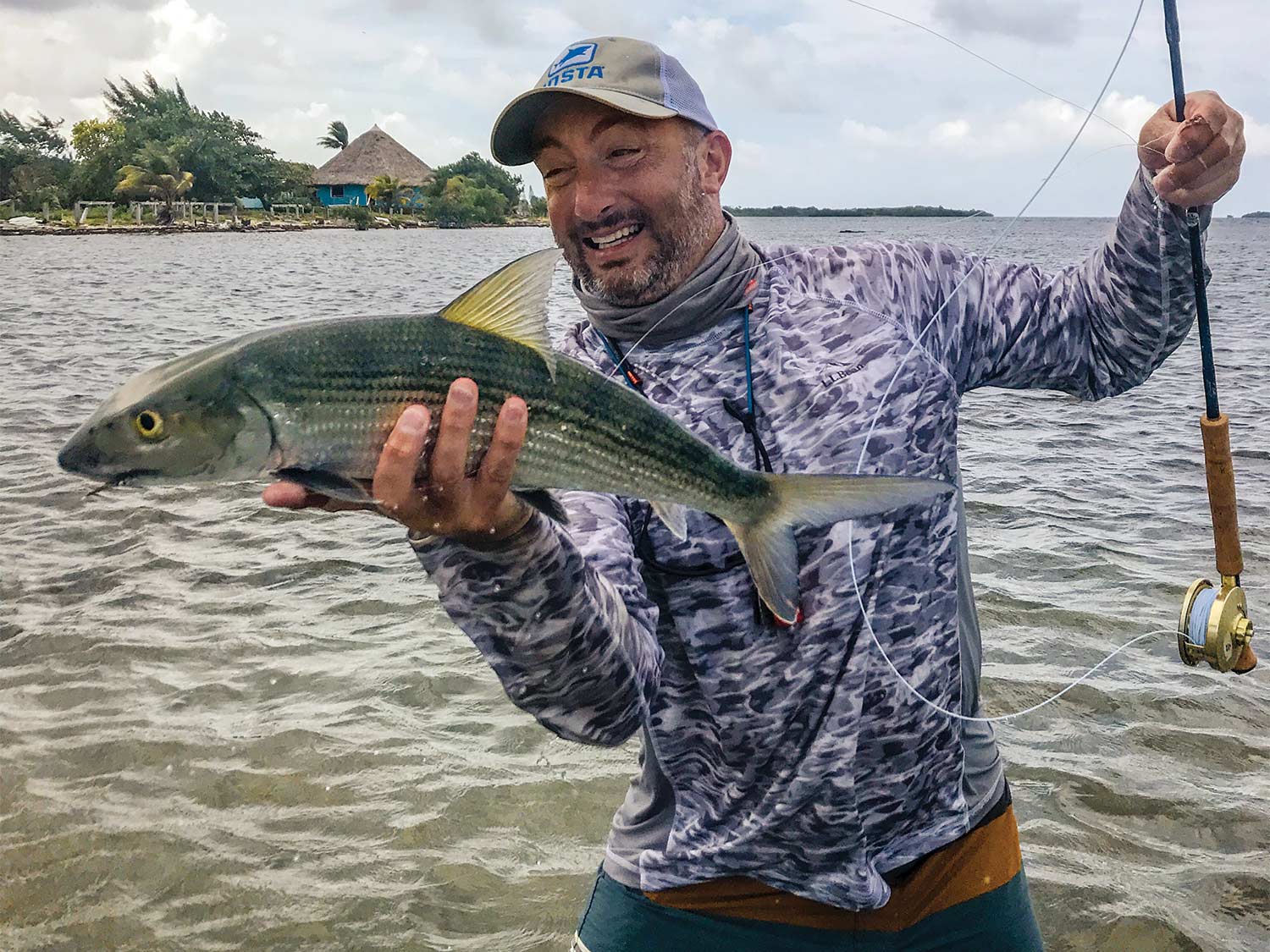
Training Day
We met Alton for the first time the next morning. In his mid-30s, he grew up in Belize City but has spent the majority of his adult life around the atoll, working with marine researchers and as a fishing guide. With his dreadlocks bundled up in a bandanna and a smile as broad as the Caribbean horizon, he looked like a flats guide out of central casting. We grabbed a few crab patterns and a handful of sparkly shrimp patterns, sizes 6 and 8, in green, red, and pink, from the lodge’s small fly shop and headed out in our small skiff. The three of us motored to the north end of the atoll, passing a bottlenose dolphin and her calf, to a small secluded lagoon ringed by mangroves. It took a minute for my eyes to adjust, but I soon spotted bonefish everywhere—tail tips along the shore, dark shadows cruising over grass, flashes of silver in the deeper water by the boat as they rolled and fed.
At first, we were stripping too fast, and the fish ignored our flies. But after Alton instructed us to slow it down, the bones wouldn’t lay off. It was nearly impossible not to hook up. We took turns with our 8-weight, one of Winston’s new Saltwater Air rods, fighting the 2- to 3-pounders, getting a feel for the strike and hookset. Like most bones this size, they would run hard at least twice, and sometimes go three or four times, before bulldogging in the deeper water until they ran out of steam and came alongside.
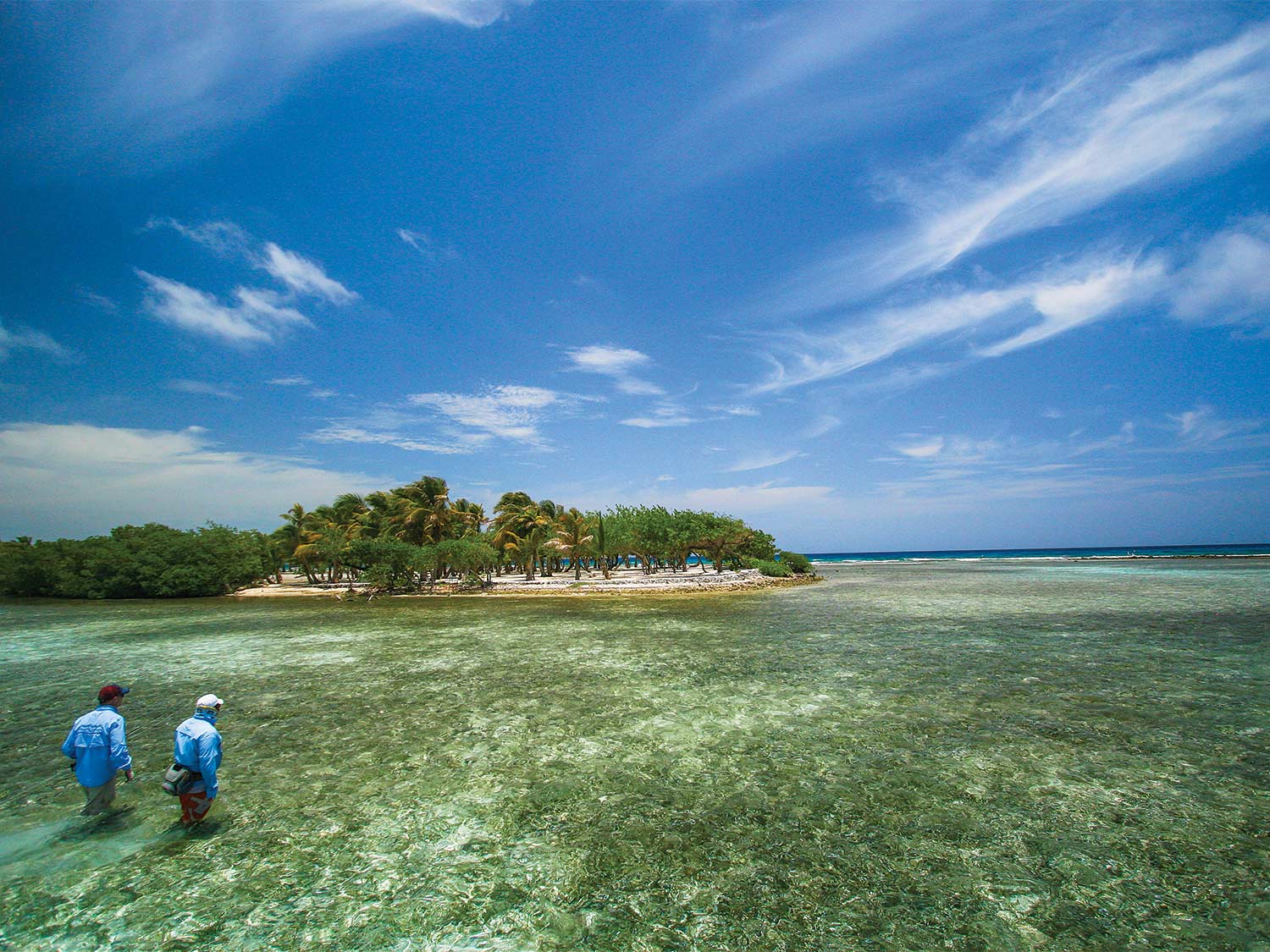
The appeal of bonefishing is easy to understand. They are stupidly strong for their size, they give a great fight—especially the larger specimens—and they live in some of the most beautiful habitat in the world. While they can be a challenge to catch, a good presentation with the right fly will often be rewarded with a take.
One knock on Belize is that the bones there are small compared to other places. When I said that to Alton, he smiled. “Just you wait, mon.”
We got a slow start the next day as thunderstorms rolled in. I watched from my cabin as other anglers waded the large flat right in front of the resort, casting to tailing bones. A 6-foot croc glided across the flat as well. Nobody paid it any mind. According to Alton and the rest of the guides, the crocs here are particularly mellow and never bother anyone.
Once we were able to get out, we headed south and stopped at every point where darker, smelly water might yield permit, tarpon, or bigger bones. This was my first exposure to the putrid grass mats that, despite their smell, shelter lots of baitfish, which, in turn, attract larger fish looking to feed. I caught one black jack and had a tarpon turn on my fly only to refuse it before we moved on.
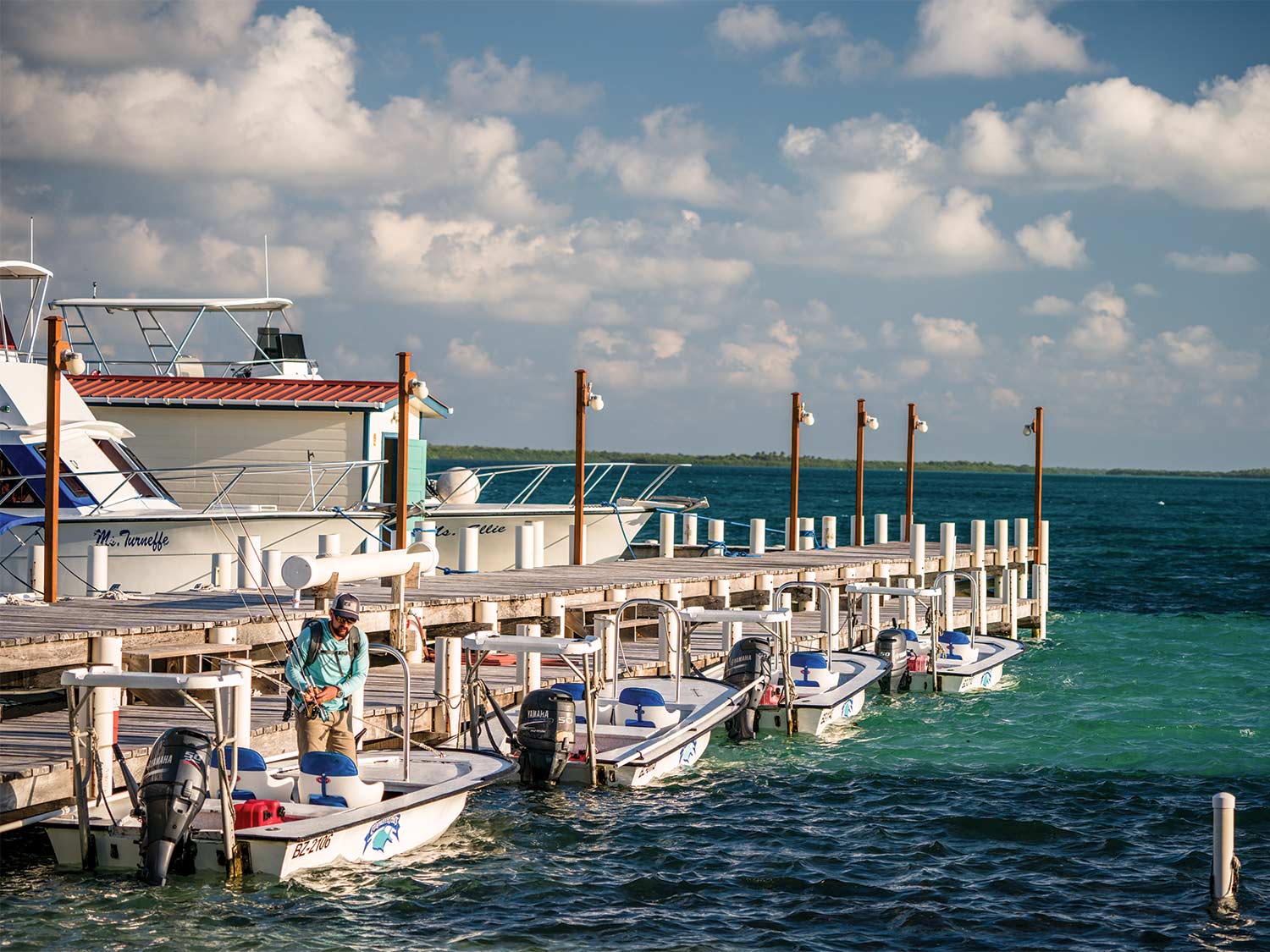
Big Dogs
We stopped the skiff by a bloom of milky-blue water, and I pulled out my 9-weight rigged with a crab and cast into the middle of it. On the second strip, I got a savage hit. The fish knocked the snot out of my EP crab—a fluffy brown and white pattern with bright-green-and-red eyes—and snapped it right off. I had no idea what it was, but knew the fish was big. I threw another fly into the murky water and again lost it to a brutal take. The water had basically zero visibility, and not knowing if there was something toothy swimming around, I rerigged with a wire leader and tied a crab to that. That got me my first taste of the big bonefish Alton had promised. These 4- and 5-pounders couldn’t leave that crab alone. Every time: strip, strip, strip—slam!
Later, we rounded a point that wasn’t far from the reef break that separates the atoll from the depths of the Caribbean. “I’ve seen permit on this flat before,” Alton said. The words were barely out of his mouth when I spotted a trio of sickle-tailed permit—very large permit—casually cruising at 12 o’clock off our bow.
“Like those?” I said.
“Yeah, mon!” But before I could cast, the three amigos disappeared onto the reef in front us.
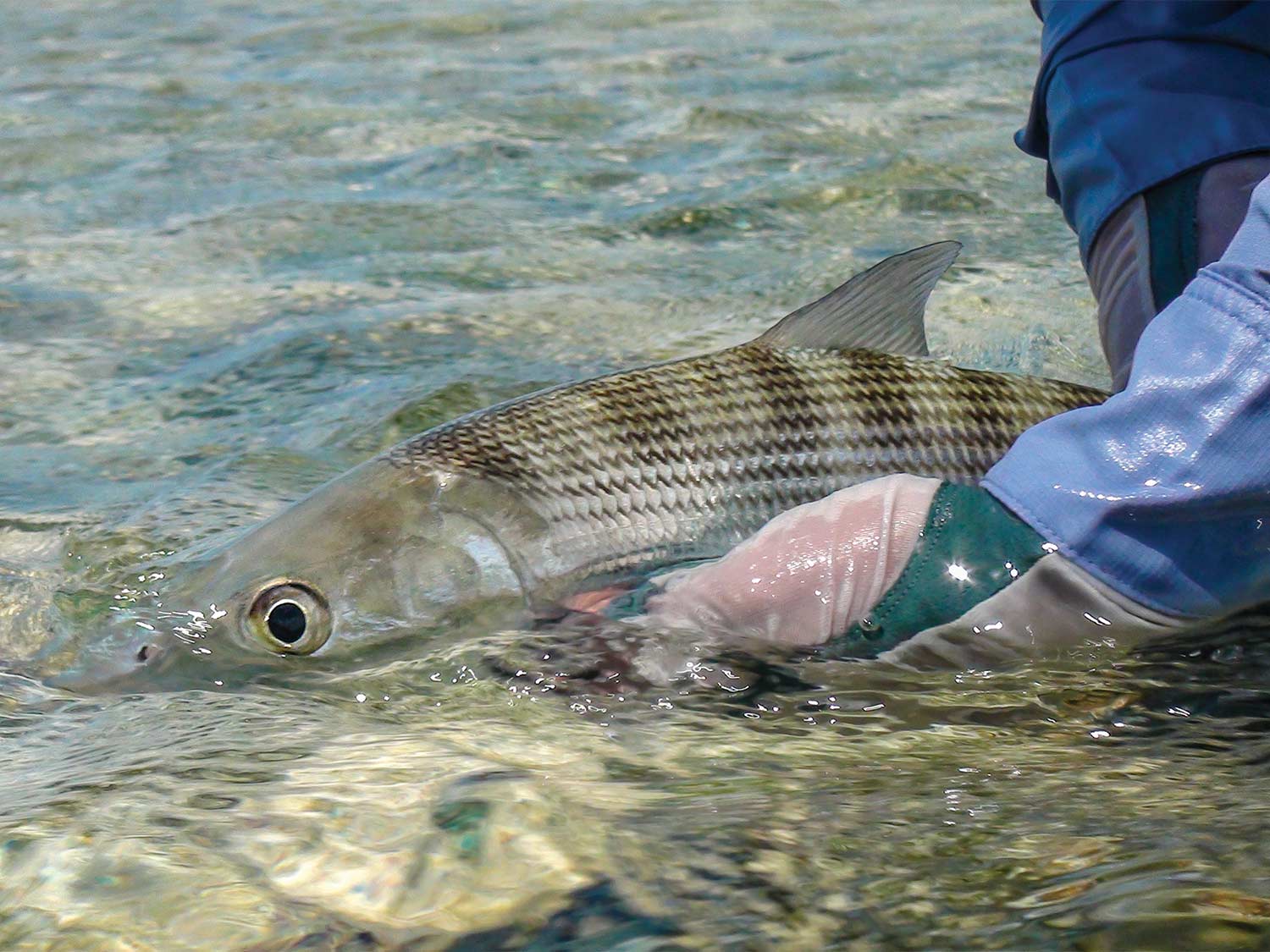
We stopped and waited and watched, and then we poled slowly across the flat and spotted them again. I made a good cast with the crab, and they turned on it. I kept the strip slow and steady, and they swam along with the fly like cats following a laser dot. Twenty-five feet from the boat, the fish peeled off toward the surf.
The adrenaline letdown was intense. It was like having a close encounter with an elk while bowhunting, or getting a good follow from a summer steelhead as your fly skates across a tailout. That was the story with permit on this trip, though. Lots of close calls, but I couldn’t get them to eat.
Read Next: Bahamas Bones
One gave me about a dozen good chances. On nearly every cast, it followed my small brown Bitter for a couple of feet, drawing nearer and nearer. Finally, it came so close I couldn’t cast to it anymore. We looked at each other for a few seconds before it darted off to deeper water.
Like the permit, the tarpon wouldn’t commit. Other than the occasional follow punctuated by a couple of heart-stopping grabs, they stayed out of reach. Their rejection didn’t really bother me though. The bonefish, always eager to play, kept our spirits up. Plus, catching permit and tarpon on a fly is supposed to be hard—that’s why we do it.
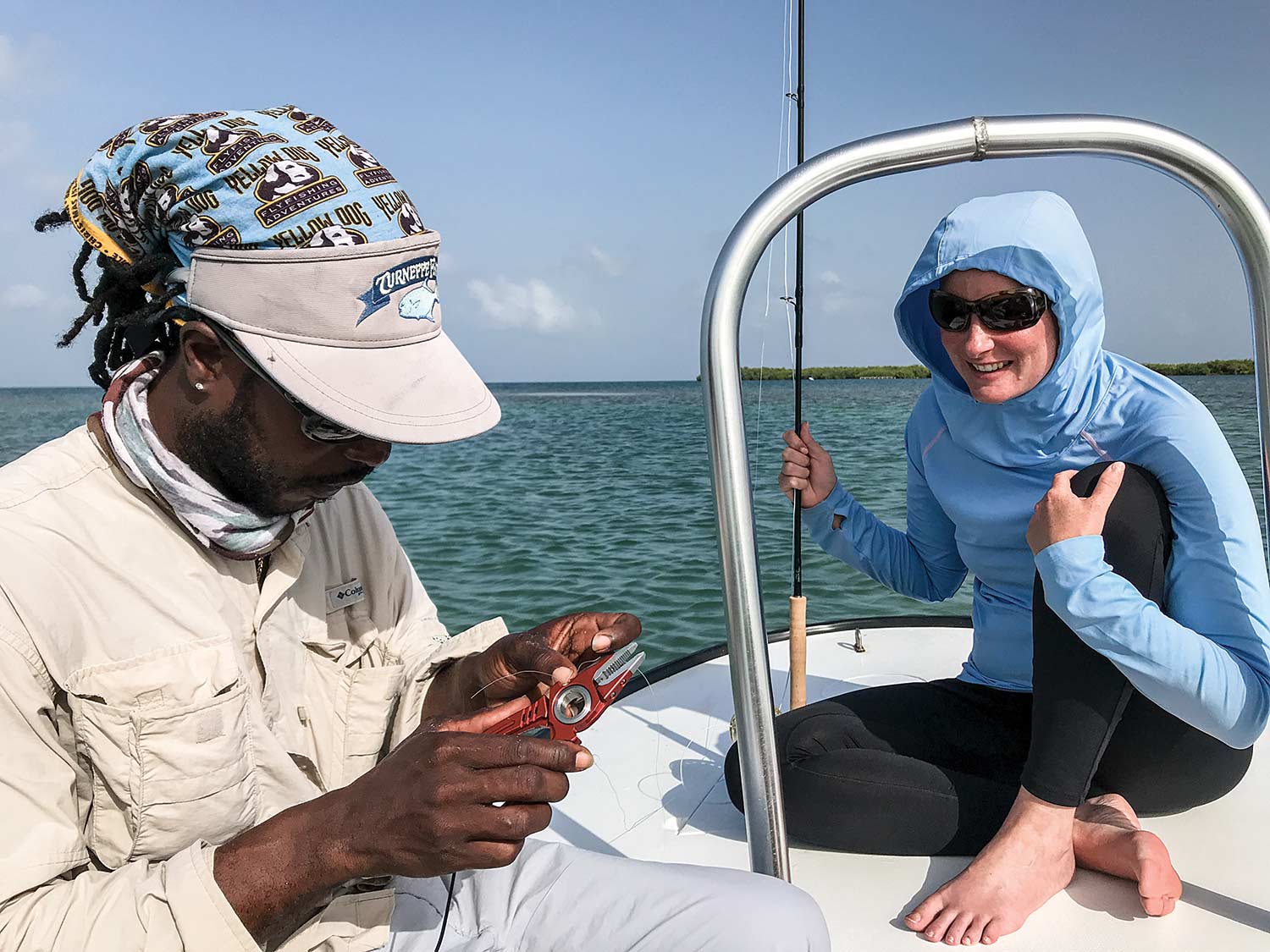
El Toro
Some trips have moments that offer a freeze-frame image that you turn back to again and again when reliving the energy and mood of a place.
For me, it was one stalk where I was by myself on a broad flat in about a foot of water with the wind at my back—perfect casting conditions. Sixty feet in front of me, I could see nervous dimpled water where a large school of bonefish were feeding. I laid my fly out, and when it landed, the water gave a shudder as the school momentarily startled. I started to strip and a fish peeled off, throwing a wake as it zeroed in on the small green crab pattern. It slammed the fly, and my strike drove the hook home. The fish lit up and ran away from me on a diagonal. My reel sang as the big fish took me into the backing. The bone cut across the flat so fast that water climbed the fly line. I kept expecting the run to stop, but the fish just went and went, taking line and running with the heart of a Spanish fighting bull.
I could feel every bit of the fish’s vitality through the rod. It ran like that five times before I could bring it in. I cradled it in my hand, removed the fly, and held it while it revived. After letting it go, I stood still in the shin-deep water for a couple of minutes, letting the experience wash over me.
In the tropics, the weather doesn’t change much from season to season, and out on the flats, the world takes on an especially timeless quality. The wind always blows, the gentle tides move fish on and off the flats, and you can take in the whole sky from one edge of the horizon to the other.
I wasn’t ready to head back to the boat yet, or leave Turneffe for that matter, so I gathered my fly line and went looking for more tails.

